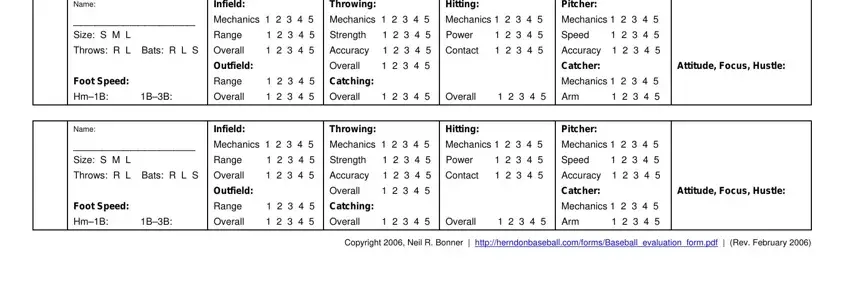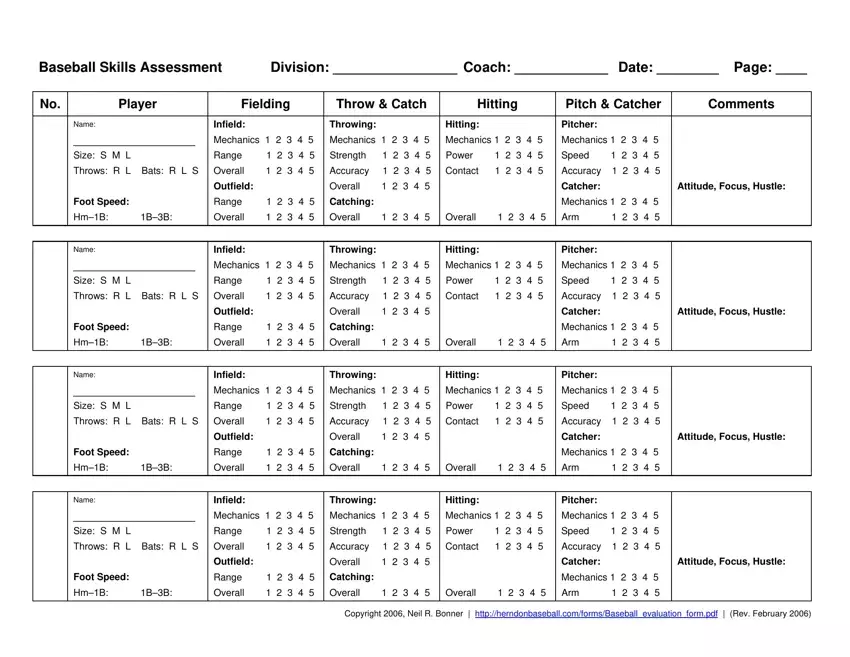There's nothing complicated about preparing the form tryouts when you launch our PDF tool. By taking these easy steps, you will have the ready document in the minimum time frame you can.
Step 1: On this page, click the orange "Get form now" button.
Step 2: The document editing page is currently open. Include information or edit current content.
The next parts will compose the PDF file that you'll be filling in:

Type in the essential information in the Infield, Name Mechanics Mechanics, Throwing, Pitcher, Hitting, Foot Speed, HmB BB, Catcher Outfield Range, Overall, Attitude Focus Hustle, Infield, Name Mechanics Mechanics, Throwing, Pitcher, and Hitting box.

Step 3: Click the "Done" button. Now it's possible to upload the PDF form to your device. Additionally, you can forward it through electronic mail.
Step 4: Get a duplicate of every single file. It should save you some time and help you avoid difficulties later on. Also, the information you have isn't going to be shared or checked by us.


